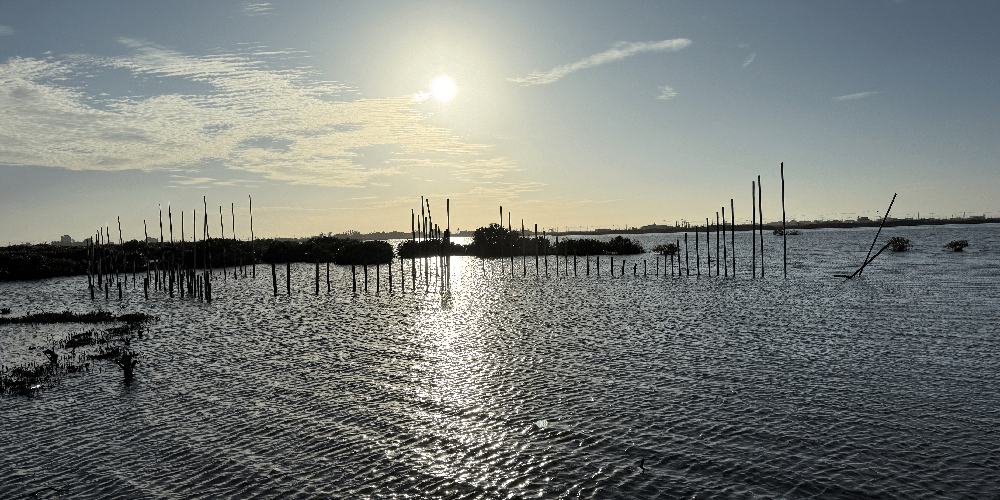Actions within the Value Chain – Operational Sites / Supply Chain
Management measures at ASUS operational sites are categorized into freshwater resource management and waste management, as described below.
- Freshwater Resource Management:
In 2022, the ASUS operational headquarters, Li-Gong Building, obtained the ISO 46001 Water Efficiency Management System certification and set a water-saving target of reducing water consumption by 1% annually. To ensure effective water resource management, improve efficiency, and reduce waste, ASUS has implemented multiple measures in both hardware and software. Water meters were installed on pipelines to monitor and analyze water usage, enabling the identification of efficiency improvements and issuing alerts to relevant personnel in case of abnormal usage, thereby minimizing waste. At the corporate headquarters, a water recycling and reuse facility was established to collect overflow water for use in restrooms, air conditioning cooling, and landscaping maintenance. Wastewater primarily originates from general office sewage and is discharged into designated wastewater treatment systems in accordance with government regulations.
- Waste Management:
ASUS classifies waste into two categories: general industrial waste and hazardous industrial waste. Hazardous industrial waste primarily originates from R&D materials and defective products. Such waste is strictly identified, classified, and managed, and then handed over to qualified recycling contractors for reuse. General industrial waste refers to all other types of waste, mainly office and employee household waste. Recyclable materials are properly sorted for recovery, while non-recyclable portions are ultimately incinerated or landfilled. Since 2015, ASUS has promoted a Zero Waste to Landfill program at its corporate headquarters, adopting the UL Zero Waste to Landfill (UL ECVP 2799) standard. Quantitative indicators are used to track the flow of waste and ensure that it is properly recycled, reused, or converted, rather than directly landfilled.
In response to the aforementioned nature-related risks, ASUS has adopted circular economy practices and strengthened supply chain management to reduce the overall environmental impact of its value chain.
Circular Economy Actions and Performance
The extraction of raw materials during the product manufacturing stage generates environmental impacts, including deforestation (packaging paper) and mineral extraction (metal chassis), which may lead to land-use changes, habitat destruction, and biodiversity loss. Through circular economy strategies, ASUS maximizes resource utilization efficiency, reduces the demand for virgin materials, and consequently lessens the pressure on natural ecosystems.
Key Actions and Performance
- Circular Supply Chain: Focused on reducing raw material consumption by introducing environmentally friendly materials (recycled plastics, recycled metals, recycled paper) to lower the proportion of virgin materials, while ensuring proper management of chemicals in products. In 2024, ASUS proactively regulated more than 450 chemical substances and accumulated the use of over 30,000 tons of environmentally friendly materials.
- Product Lifecycle Extension: Adopted modular design to improve product disassembly and extend product lifecycles. According to the French Repairability Index, the ASUS ROG Strix G18 model achieved a score of 8.6. Another service to extend product lifecycles is Device as a Service (DaaS), which replaces purchasing with leasing to reduce waste.
- Recycling System Establishment: In 2024, ASUS’ global recycling services covered more than 82% of its sales markets, collecting over 12,000 tons of electronic waste. The total annual recycling volume accounted for 13% of the global sales product weight.
Supply Chain Management and Performance
Environmental impacts generated from supply chain processes are the primary source of ASUS value chain impacts on natural capital. These include freshwater consumption and wastewater discharge during manufacturing (affecting aquatic ecosystems), and improper waste disposal (polluting soil and groundwater), which directly damage three core elements of ecosystems: water, land, and soil. Such impacts contribute to biodiversity loss and degradation of ecosystem functions. Through supply chain management strategies, ASUS improves suppliers’ environmental practices to help protect biodiversity and the integrity of natural capital.
Key Actions and Performance
- Responsible Minerals: ASUS conducts smelter due diligence in accordance with the five-step framework of the OECD Due Diligence Guidance. Based on the investigation results of the Responsible Minerals Initiative (RMI) and the regions defined under the EU Conflict Minerals Regulation that took effect in 2021 (Conflict-Affected and High-Risk Areas, CAHRAs), ASUS sourced metals in 2024 from 693 smelters, primarily located in Asia (62.0%), followed by the Americas (14.8%), Europe (14.8%), Africa (7.5%), and Oceania (1.0%). All smelters were verified as qualified by either the RMI or the London Bullion Market Association (LBMA).
- Freshwater Resource Management:
- Introduced water-saving equipment and technologies (e.g., rainwater recycling and reuse) and implemented process wastewater recycling, along with establishing water quality monitoring systems to enhance wastewater treatment capacity. In 2024, ASUS strengthened supplier environmental footprint investigations, with key suppliers collectively treating 5,592 thousand tons of wastewater (including 2,808 thousand tons discharged and 2,784 thousand tons recycled). Furthermore, 100% of motherboard manufacturers provided compliant wastewater testing reports, and 61% of key suppliers established water-saving targets. ASUS will continue to strengthen supplier collaboration and management in water resource practices.
- To deepen supplier awareness and strengthen action, ASUS organized a “Water Resource Management and Reduction” assistance meetings in 2024. The meeting introduced global water risk trends for high water-consuming suppliers and applied the WRI Water Risk Atlas (Aqueduct) tool to conduct regional risk assessments, helping suppliers identify water stress and water quality risks at their operational sites. The conference also referred to the CDP Water Security framework, guiding suppliers in disclosing management strategies and response actions, and used case studies and data to demonstrate the environmental impacts of process water usage.
Progress of Freshwater Resource Management Support Program
Conduct an inventory of key water-resource suppliers
2023
- Using water-footprint data and product-process analysis, identify high water-use processes and supplier groups
- Establish a tiered list to inform subsequent management and assistance efforts

Develop risk awareness and management capabilities
2024
- Organize educational training sessions and seminars to communicate water-related regulatory developments and corporate responsibilities
- Leverage the WRI Aqueduct tool to evaluate water stress and risk in the regions where suppliers’ operational sites are located
- Implement the CDP Water Security framework to support suppliers in self-assessing their current water resource management practices
- Deliver risk-hotspot analysis reports to help suppliers identify sources of water-related risk and develop appropriate response capabilities

Establish reduction targets
2025
- Assist suppliers in accordance with their operational contexts and regional water risk profiles in establishing specific, measurable reduction targets
- Introduce technology to driven improvements—such as wastewater recycling and treatment systems, as well as process optimization—to reduce water consumption
- Offer industry best practices and illustrative case studies as reference points for continuous improvement.

Track progress regularly
2026
- Establish a semi-annual monitoring mechanism to regularly report water usage data and improvement progress
- Leverage a data platform for trend analysis to identify anomalies or elevated risks at an early stage
- Waste Management: Ensuring that suppliers entrust qualified contractors to handle waste. In 2024, 100% of ASUS suppliers engaged qualified waste disposal contractors; 14% of suppliers obtained Zero Waste certification; and 54% of suppliers established waste reduction targets.
Actions within the Value Chain – Operational Sites and Supply Chain Actions on Biodiversity
Biodiversity Management Measures and Performance at Operational Sites
As ASUS sites are located near Guandu Nature Park, and in recognition of the importance of environmental conservation, ASUS has supported the Coastal Cleanup Adoption Program initiated by the Environmental Protection Administration (EPA). Since 2017, ASUS has adopted a 500-meter coastal stretch of the Wazihwei Nature Reserve in New Taipei City. This area, adjacent to Guandu Nature Park, contains a valuable wetland ecosystem and serves as an important habitat for migratory birds, aquatic species, and diverse wildlife. In 2024, ASUS organized two coastal cleanup events with a total of 204 volunteers participating, encouraging employees to engage in environmental initiatives and raise awareness of conservation.
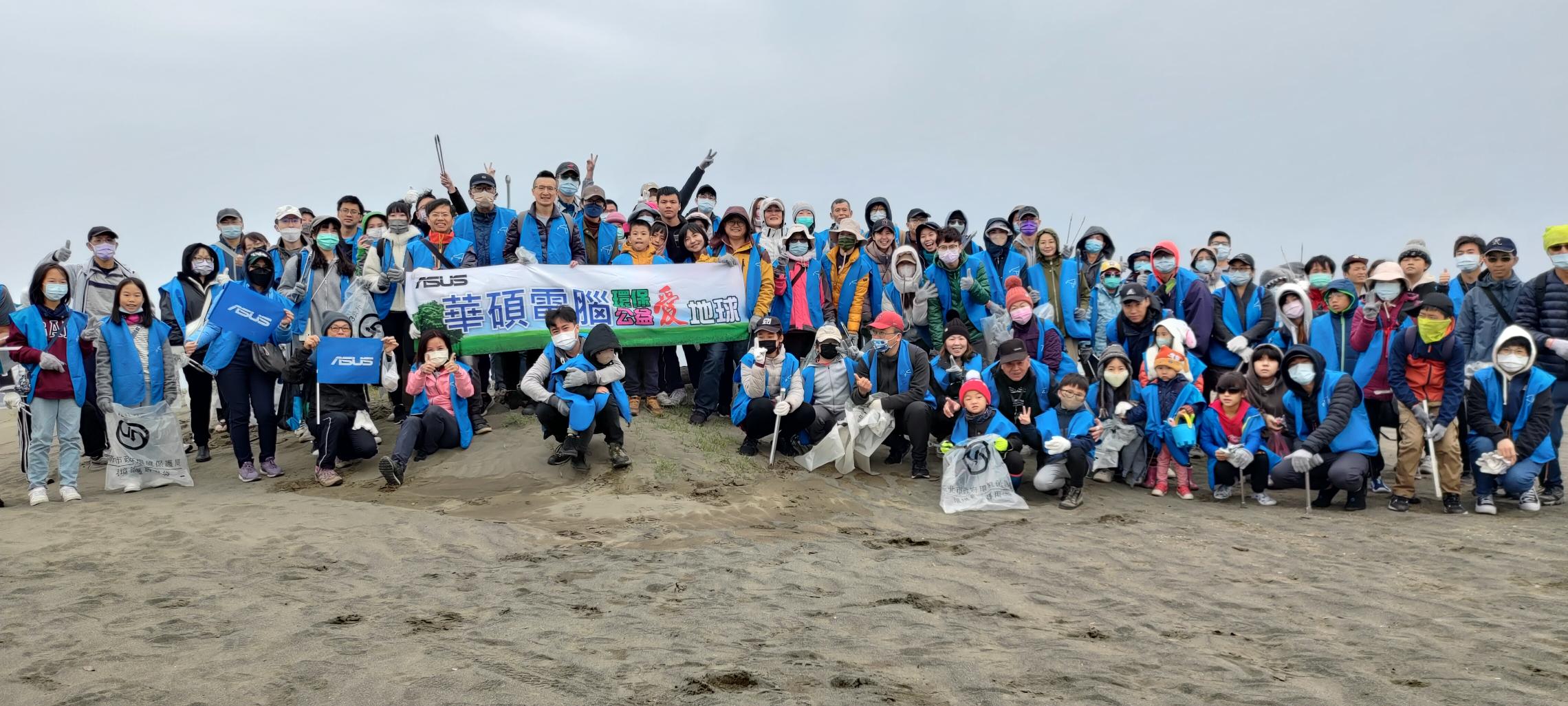
Supply Chain Biodiversity Actions and Performance
Supply Chain Management Measures
- Integration of Biodiversity: Biodiversity identification and management have been incorporated into the Supplier Code of Conduct. ASUS suppliers are required to consider the local environmental impacts of their operations and establish biodiversity policies.
- Water Resources: Suppliers are required to provide ASUS with quarterly water-saving performance data and annual compliant wastewater testing reports, obtain ISO 46001 Water Efficiency Management System certification, or establish water recycling targets. Currently, 61% of suppliers have set water reduction targets.
- Waste Management: 14% of suppliers have obtained Zero Waste certification, and 54% of suppliers have established waste reduction targets.
- Biodiversity Audits: Suppliers located in biodiversity-sensitive areas are included as key suppliers in the annual on-site audit plan.
- Supply Chain Transparency: Suppliers are required to provide detailed information on production processes, operational management reports, and raw material sources.
- Supplier Selection Criteria: Priority is given to packaging suppliers with environmental certifications such as FSC and PEFC.
Actions Beyond the Value Chain
Dasyuehshan Middle-Altitude Pangolin Habitat Enhancement and Conservation Project
Project Background
Taiwan is a densely populated island with limited arable land, where agricultural development has mainly relied on intensive farming. To improve crop quality, yield, and field management efficiency, farmers have commonly adopted conventional farming practices — applying chemical fertilizers, pesticides, and herbicides. However, while such practices prevent crop diseases and pests, they often leave chemical residues in agricultural products and soils, and through bioaccumulation, affect higher-level species in the local food chain. In contrast, herbaceous cultivation avoids the use of herbicides and instead relies on more frequent mowing. This approach allows harmless weeds to remain while removing harmful or excessively tall species, gradually reducing unwanted weeds and lowering the chemical burden on the soil.
In certain areas of Daxueshan, changes in forestland policy required alignment with government initiatives to promote more environmentally friendly farming practices. The Forestry and Nature Conservation Agency invited the Kuan Shu Educational Foundation, a non-profit organization experienced in supporting eco-friendly agriculture, to assist local farmers in adopting sod culture. During this transition, farmers increasingly observed pangolin activity in the fields. In response, ASUS collaborated with the Kuan Shu Educational Foundation and engaged Professor Ching-Min Sun from National Pingtung University of Science and Technology to lead a three-year research project. The study, focusing on the 14K–16K section of the Daxueshan Forest Road and adjacent leased national forest land, evaluates the effects of conventional farming versus herbaceous cultivation on pangolin habitat quality, food resources, and activity frequency, while also strengthening community-based pangolin reporting and conservation efforts. In addition, ASUS leverages its corporate platform to promote awareness of nature and biodiversity through both online and offline communication channels.
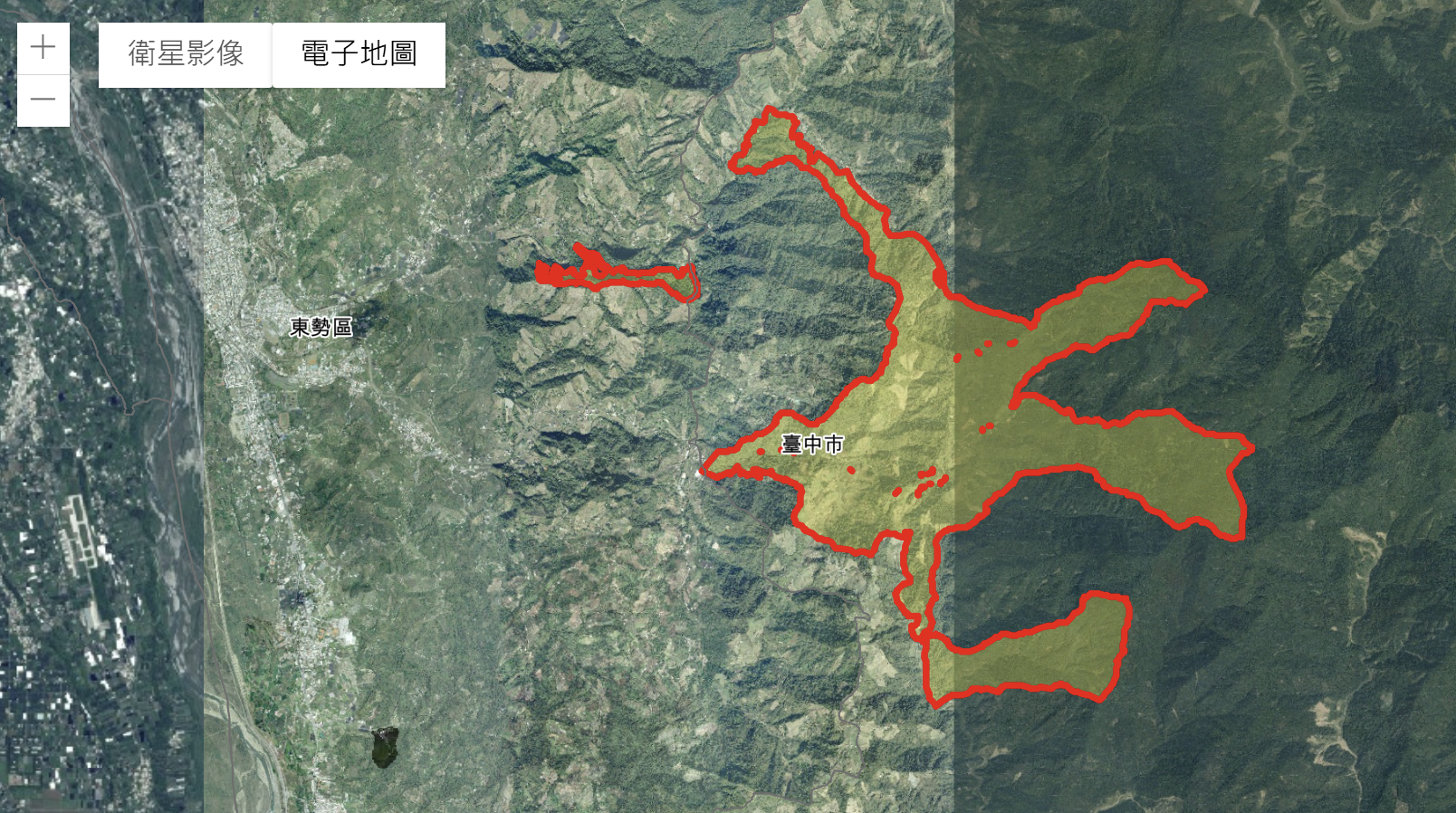
Project Description
With the recommendation of the Kuan Shu Educational Foundation and discussions with the Taichung Branch of the Forestry and Nature Conservation Agency, ASUS launched a Nature Positive Action Project. In alignment with the agency’s "Nature Carbon Sink and Biodiversity Project Matching Platform" policy, ASUS submitted a self-initiated proposal and became one of the first successful corporate applicants in 2024. Chairman Jonney Shih represented ASUS at the press conference celebrating the project-matching outcomes and presented the company’s Natural Capital Strategy Map, emphasizing its commitment to advancing both within the value chain management and actions beyond the value chain. Through the conservation of endangered native species and the application of innovative technologies, ASUS aims to respond to nature-positive goals and realize a vision of harmony with nature.
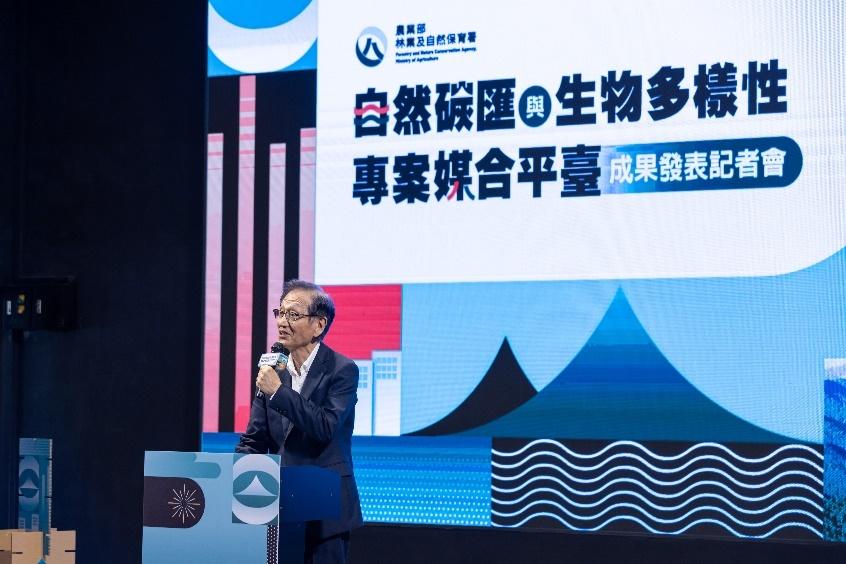
The 2024 phase of the project focused primarily on farmer interviews and habitat surveys, aiming to understand the historical and environmental relationships between tenant farmers on leased national forest lands and the surrounding ecosystem. The study also sought to document sightings of pangolins, including the contexts and locations of such encounters, to help the research team determine the connection between sod culture practices and pangolin habitat suitability. Preliminary interviews revealed that many farming families in the region trace their roots back to the Japanese colonial era, when shallow mountain areas were opened for agriculture or camphor production to boost food supply. After the Nationalist government arrived in Taiwan, forestry operations expanded, leading to the development of local communities. However, the recent shift toward reforestation under the Forestry and Nature Conservation Agency's policies has significantly impacted the local economy. In response, farmers have increasingly transitioned to natural farming methods or incorporated afforestation into their agricultural plots. With support and guidance from the Kuan Shu Educational Foundation, more farmers have adopted sod culture, avoiding chemical agents in favor of environmentally friendly cultivation.
Key Outcomes
Among the farmers interviewed in local communities, all reported having seen pangolin burrows, and all but one had personally seen a pangolin. The community’s pangolin sighting rate reached 96%, and photographic records from interviews and local reports are shown in the image set below. Additional pangolin sightings by the research team are presented as below. Since the project launch in 2024, the research team conducted pangolin burrow searches around Fushan Lane near the 14K section of the Daxueshan Forest Road. A total of 13 burrows were identified along ridge lines adjacent to the roadside, as shown in the location diagram below. These findings suggest that pangolin habitats are in very close proximity to the local community. The 2024 research findings were reviewed and validated by the Forestry and Nature Conservation Agency, and ASUS became one of the first companies to receive a biodiversity certification.

By the first quarter of 2025, a total of 68 burrows had been recorded in the study area; an additional 67 burrows were discovered in the second quarter, bringing the cumulative total to 135. Except for two community-reported burrows located in conventionally farmed fields, all others were found in areas practicing herbaceous cultivation or using significantly less agrochemicals. However, 42.86% of community-reported burrows were misidentified, indicating a need for awareness. In response, a pangolin ecology and habitat identification training session was held for farmers on April 18, 2025, with course photos shown below. To further enhance local farmers’ understanding of the species, provide emergency rescue training, and establish a community-based reporting mechanism, additional training sessions are planned.
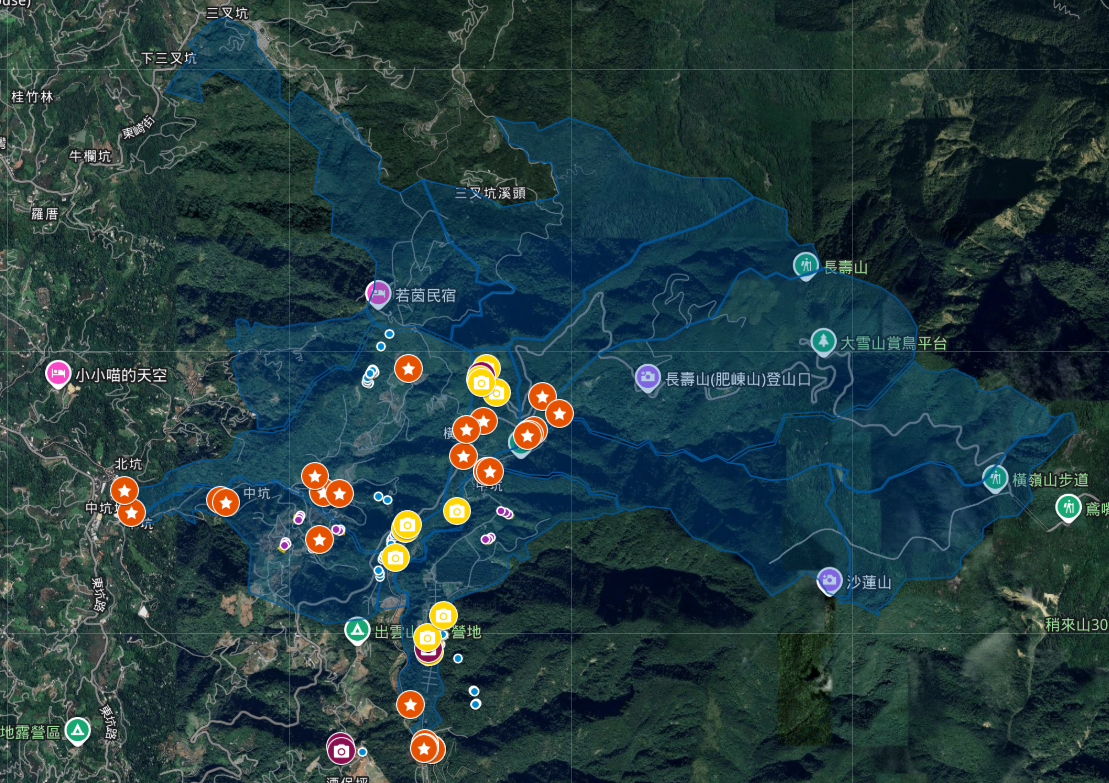
From the launch of the project in 2024 through the second quarter of 2025, a total of 13 pangolin burrow surveys were conducted, including 7 community-reported cases, of which 3 were confirmed as false identifications. Additionally, the research team completed 1 vegetation survey, 1 termite survey, 5 ant surveys, and 1 soil sampling and testing session. A total of 15 automated cameras were installed, including 3 positioned based on community reports of potential pangolin activity routes. As the project is still in its early phase, further analysis of soil and vegetation samples, as well as chemical residue assessments, will be conducted progressively.
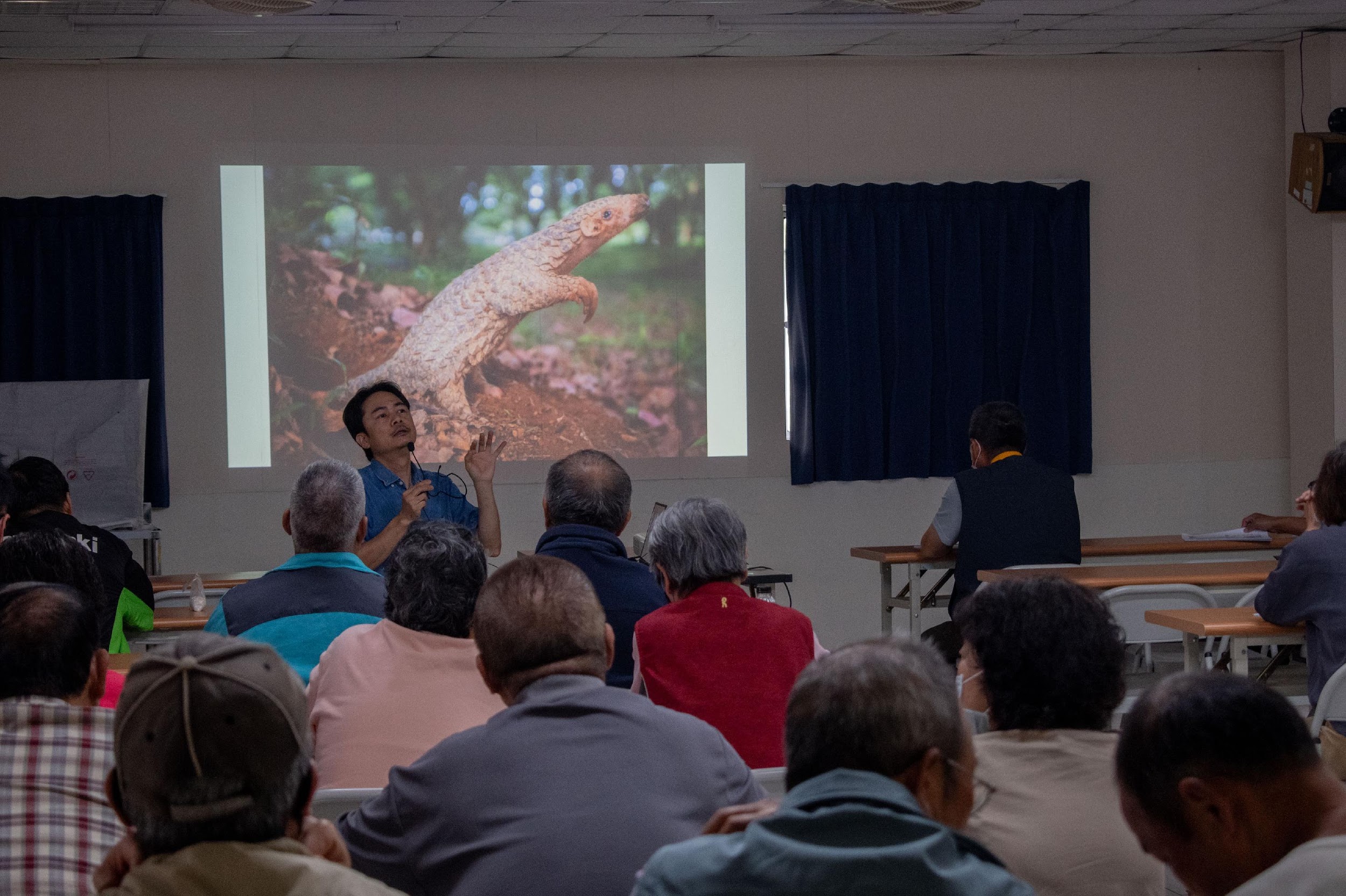
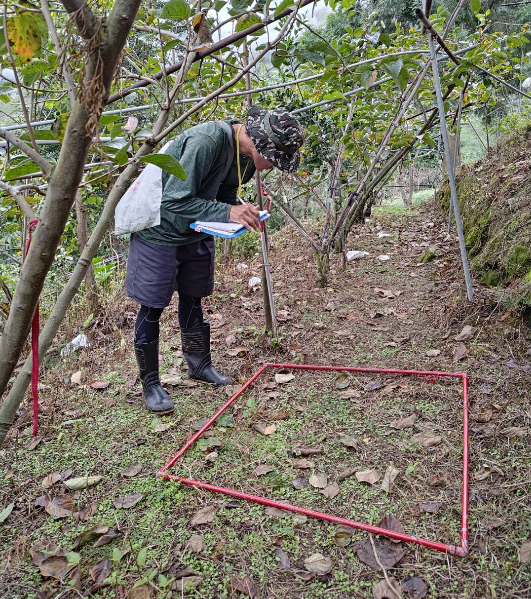
Corporate Biodiversity Education and Awareness
Recognizing that nature and biodiversity are emerging and complex issues, ASUS, as a technology leader, understands that education and awareness-raising are powerful tools for driving impact. These efforts help the public better understand the relationship between nature, people, and ecosystems. In 2024, ASUS participated in the press conference hosted by the Forestry and Nature Conservation Agency and independently organized two in-person events—an employee experiential activity and a project discussion forum. In addition, ASUS promoted biodiversity awareness through news releases, videos, social media, and internal communication channels. To further integrate issue-based education with its environmental strategy, ASUS published a theme report on Nature Impact Assessment, bridging environmental management analysis and biodiversity topics to achieve a comprehensive approach to evaluation and management.
Taiwan Pangolin: The Last Hope for Global Pangolins
Documentary and Panel Discussion
To enhance employees’ understanding of the current status and ecological importance of the endangered pangolin, ASUS hosted a documentary and Panel discussion featuring Taiwan Pangolin: The Last Hope for Global Pangolins. The event invited Mr. Tsui-Jan Hung, Executive Director of the Kuan Shu Educational Foundation, and Professor Ching-Min Sun of National Pingtung University of Science and Technology to share the background and objectives of the Pangolin Habitat Improvement and Conservation Project in the Mid-Elevation Area of Daxueshan. The event attracted approximately 60 participants. Professor Sun highlighted the ecological value of pangolins, explaining that they play a key role in ecosystems. He noted that pangolins and their primary food source—ants—are not in a competitive relationship but rather in a mutualistic interaction. Leftover ants from pangolin foraging can become food for other nearby ants, helping to revitalize the local ecological network and support biodiversity.
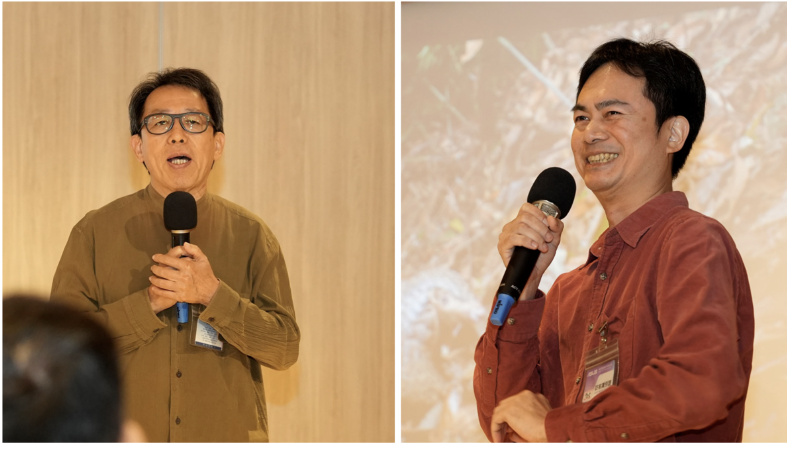
Employee Engagement
Visiting a Community Below Sea Level – Chenglong Wetlands Tour
Chenglong Wetlands, located in Kouhu Township, Yunlin County, was originally farmland. However, due to low elevation and prolonged over-extraction of groundwater, the area experienced severe land subsidence. In the 1980s and 1990s, typhoons triggered seawater intrusion, submerging the farmland and rendering it unsuitable for cultivation. The area naturally transformed into a wetland. The Forestry and Nature Conservation Agency commissioned the Kuan Shu Educational Foundation to collaborate with the local community on regular ecological resource surveys and management efforts, while continuously monitoring the wetland’s biodiversity to promote the sustainable development of Chenglong Village. Through environmental education and experiential tours designed by the foundation, Chenglong Wetlands has become a leading climate change adaptation site. One of its landmark adaptive structures, “Shrimp Boss’s Stilt House”, serves as a model of flood prevention, elder-friendly design, and energy-efficient green building. The project demonstrates how Chenglong Village has transformed to coexist with water amid increasingly extreme climate conditions.
